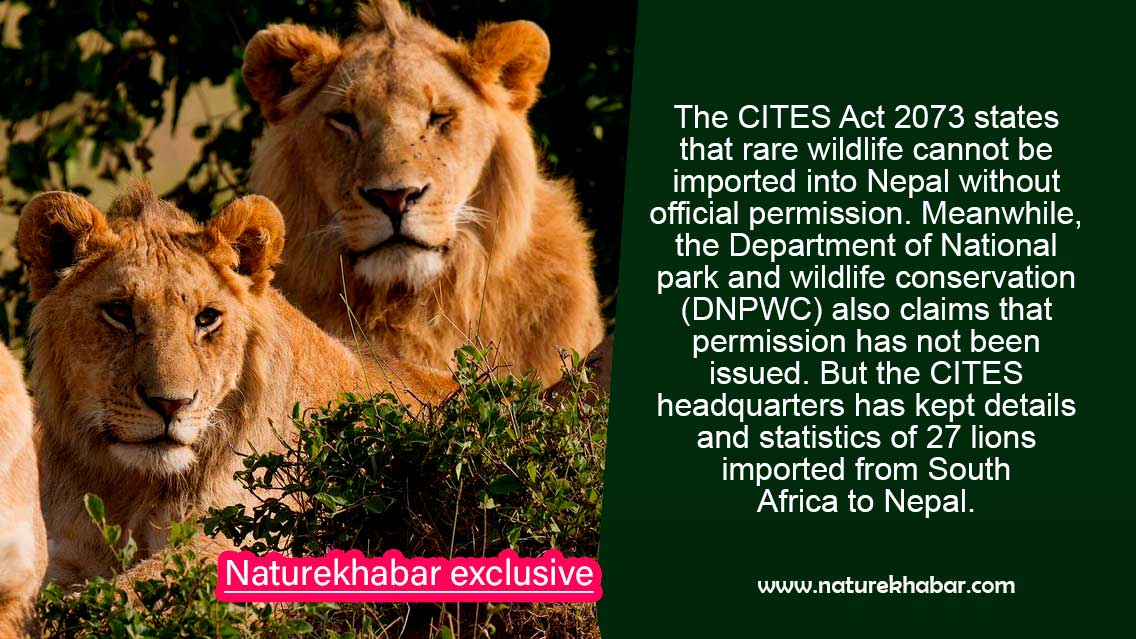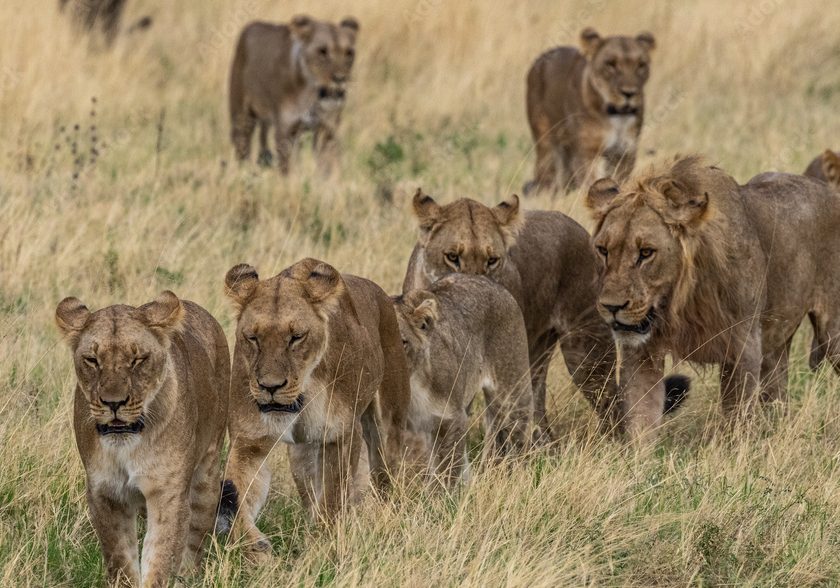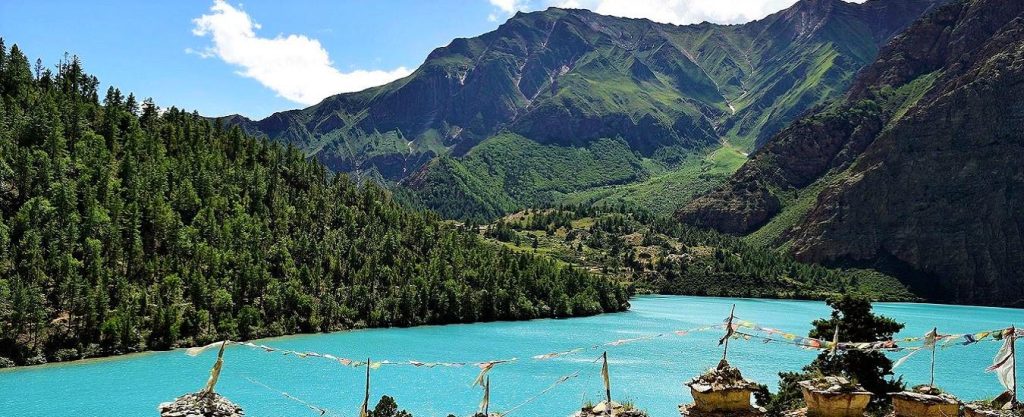27 lions imported from South Africa in two years !

Kathmandu – It has been found that 27 live lions (Panthera Leo) were imported to Nepal from South Africa on different dates.
The lion is the world’s most endangered species. The law has completely banned its trade and transportation. It is on the Red List of the World Conservation Union (IUCN) and Appendix 2 of CITES.
The database mentioned on the website of the Convention on International Trade in Endangered Species of Wild Fauna and Flora (CITES), to which Nepal is a party, has confirmed that Nepal was imported. The database shows that 27 live lions were imported in a two-year period between 2016 and 2017.
According to the database, five live lions were imported in 2016, three for the first time and two for the second time, while 22 lions were imported in 2017, 18 for the first time and four for the second time.
This database on wildlife trade has been prepared by the United Nations Environment Program (UNEP)-WCMC on behalf of the CITES Secretariat and uploaded to its website.
The CITES Secretariat, which has 186 countries as parties, is the main body for regulating and controlling international trade in endangered species of wild fauna and flora. Its headquarters is in Geneva, Switzerland.
According to the UNEP-WCMC database, 112 types of items were imported to Nepal in 2016. Of these, serial numbers 45 and 46 contain details of the import of 3 and 2 lions respectively.
Similarly, 84 items were imported in 2017. Of these, serial numbers 47 and 48 have 18 and 4 lion import details respectively. All these lions are mentioned in the database that they were imported alive. Its source is informed that they were captive bred.
The database contains details such as the name of the wildlife, class, family, place of origin, source, importer, exporter, purpose, quantity, condition of the item, etc. Some of the imported items are listed in Appendix I of CITES, while most are listed in Appendix II.
The above data and details only cover the two years of lion import. Apart from lions, other rare wildlife and parts of three species are also listed in the database. Apart from the above, it is seen that more than one hundred such items are imported every year. The sample number of such items is many times higher than the number of imports.
The Department of National Parks and Wildlife Conservation (DNPWC) is the body that implements the International Trade Control Act 2073 issued by the Government of Nepal for the implementation of the CITES Convention. This department has responded that they have no information on this matter.
This department is the official body of Nepal implementing the CITES Convention and Act. The department has responded that it is unaware of the database uploaded by the CITES Secretariat.
‘We did not know anything about this. We will hold a meeting and discuss about this issue,’ Ramchandra Kandel, Director General of the Department of National Parks and Wildlife Conservation, gave a brief response to Nature News.
Rishi Ram Dhakal, an ecologist from the same department, insisted that the department has not given permission to anyone to import such wildlife on any date so far. ‘We have not given any permission to any exporter to import such wildlife. We are also surprised to see this data and details,’ he said in a brief response after looking at the CITES database in website.
When studying the databases of other countries, it is seen that the official CITES body of the importing country has informed the CITES Secretariat in Geneva about the details and status of the imported goods. They have informed the Secretariat about the number of such animals that have entered the country.

But that information is not visible anywhere in the database provided by the official wildlife department of Nepal. Therefore, the column for the details provided by the importing country is empty. However, all the details sent by the lion exporter to the secretariat are updated in the database.
Experts in the law on the regulation and control of the transport of rare wild animals and plants describe it as a serious issue.
‘This has become a serious issue after an organization like CITES put it on its website. There are no lions anywhere in Nepal. Where have so many lions gone? Who is transporting them to Nepal?, a former official of the Ministry of Forests and Environment told Nacharkhabar, ‘The international market price of lions is high. Therefore, it seems that the world's rich are raising lions for their hobby. Such wild animals must have transited through Nepal to fulfill their own hobby.’
He indicated that the lion trade may have taken place with the aim of transiting through Nepal and exporting to other countries to gain commercial benefits, and said, ‘This is a matter of investigation. There should be an investigation. Not only lions, but other items also seem to be coming in unhindered.’
The CITES Act 2073 states that no such wildlife or items can be imported into Nepal without the permission of an official body. The department also claims that no permission has been issued. However, the CITES headquarters has reported that 27 lions have been imported into Nepal.
The CITES Secretariat regulates and controls the conservation of various rare and endangered species of wild fauna and flora and their international trade.
Nepal became a party to the Convention on International Trade in Endangered Species of Wild Fauna and Flora on 16 September 1975. Nepal has already enacted the International Trade in Endangered Fauna and Flora Act 2073 to implement the Convention. The Convention was concluded in Washington, DC, USA on 3 March 1973.
There are no lions in Nepal's only Central Zoo in Jawalakhel. It is not seen that they are being kept in other places in Nepal. Looking at the current situation, there are no lions anywhere in Nepal. However, the database of the CITES Secretariat shows that 27 lions have been imported into Nepal.

The lion is also called the king of the jungle. It is also considered a symbol of strength and courage. Its number in the world is estimated to be around 24,000. By 1900, its number in the world was estimated to be 200,000. By 1970, this number had decreased to 90,000.
So, once, lions roamed throughout Africa, Asia, and parts of Europe. However, the species is now restricted to parts of sub-Saharan Africa and India's Gir National Park. Of the world's five largest populations, Tanzania in Africa has three of the largest.
Most lions live in sub-Saharan Africa. As lions are highly adaptable big cats, they can survive in a variety of habitats, including dry forests, dense bush, floodplains, and semi-arid desert areas. However, they generally prefer open grasslands with dense undergrowth where they can easily stalk their prey.

 Subodh Gautam
Subodh Gautam




Feedback